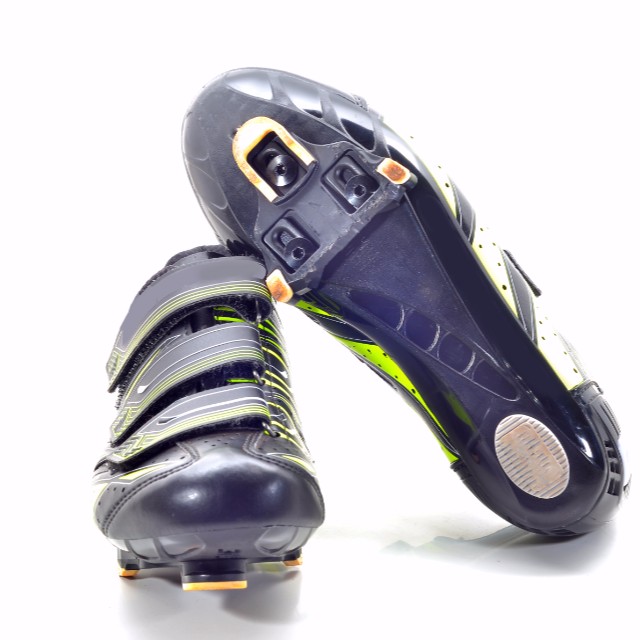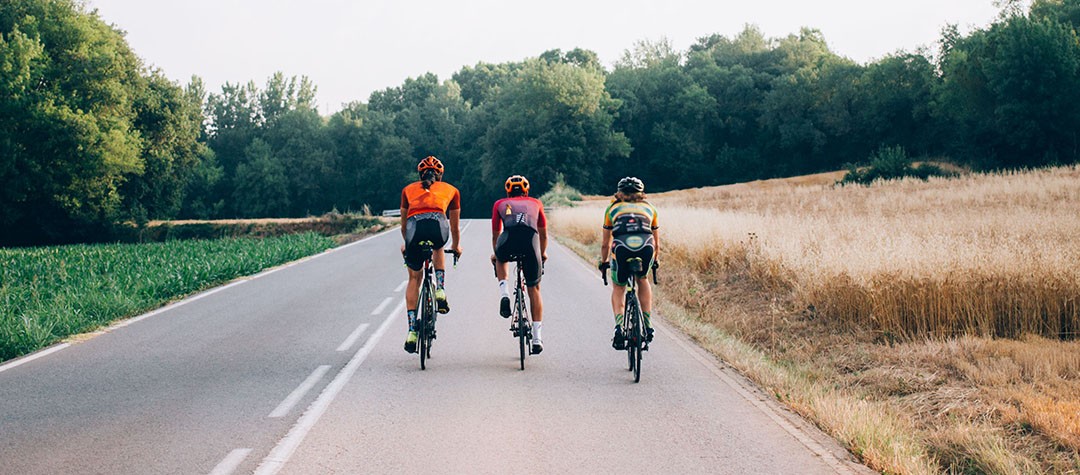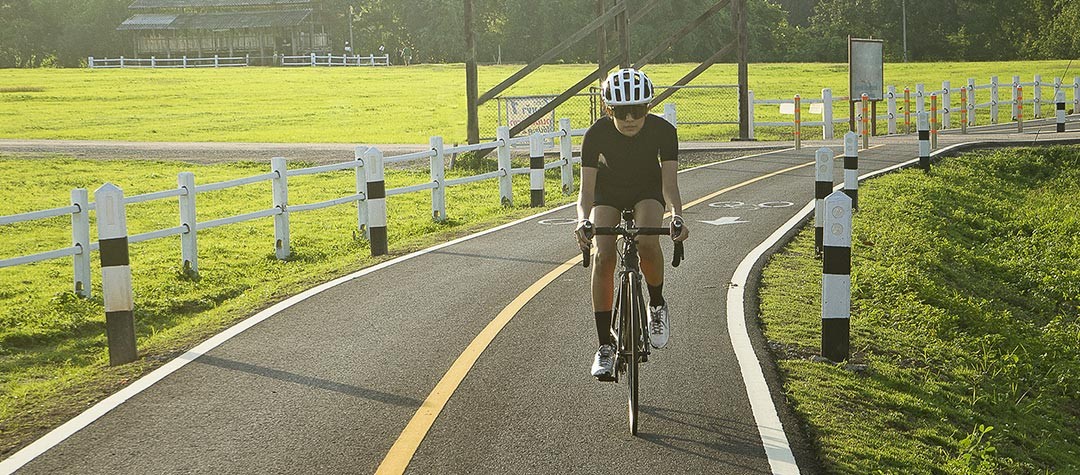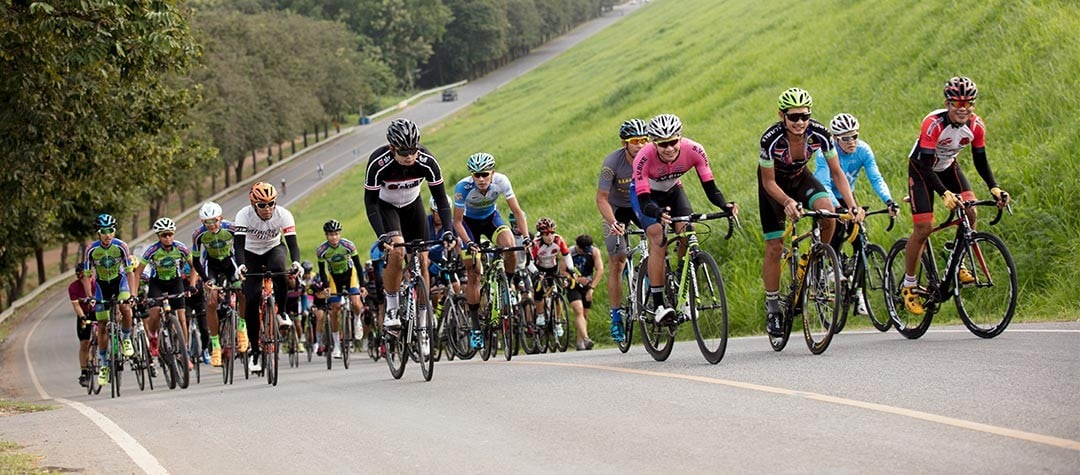It’s a common misconception that most cycling related injuries result from crashes. In fact, unless you’re a pro rider where crashing is a common risk you’re most likely to suffer from injuries/conditions that could actually be prevented.
Here’s a look at the most prevalent cycle injuries and how to best avoid them in the first place.
The places where your body makes contact with the bike are often where most problems originate from, primarily through poor positioning: your bottom, hands and feet.
1. Bottom
The most common injury to affect the humble bottom is saddle sores. These are caused through rubbing and chafing of the skin by fabric of the shorts as you sit and move around in the saddle. If you are doing any sort of serious mileage a decent pair of padded shorts that fit well are an absolute must.
Many modern shorts come with hypoallergenic ‘chamois’ inserts with fits to suit male and female body shapes. It’s also worth considering chamois cream - a moisturising cream that is applied to the pad of the shorts to make them even softer. Many pros use cream due to the long miles they spend in the saddle just for that added bit of protection.
Never wear underwear under cycle shorts!
NOTE: Never wear underwear under cycle shorts! You’ll only regret it!! A good short with a snug fit is a simple case of prevention rather than cure.
2. Hands
Numb hands’ is something that many cyclists can suffer with from time to time. It’s caused by excess pressure on the ulnar nerve (the largest unprotected nerve in the body attached to the little finger and running all the way up the arm). The best way to alleviate this is to check your position on the bike . It could be that you are leaning too far forward and over the front wheel so your uneven weight distribution, rather than being balanced between backside and hands/arms, is causes extra pressure on your hands. Another reason is because you may be gripping the handlebars too tightly; obviously a firm grip on the bars is important but you certainly shouldn’t be able to see the whites of your knuckles.
If you are confident that your position and grip are fine yet you still suffer from numbness try regularly shifting your hand position on the bars from drops to tops to hoods. Despite riding for years I occasionally get numbness, but simply shifting my position soon remedies it.
3. Feet

The way that your feet attach to the pedals via the cleat on the underside of your cycling shoe is vitally important. If not set up properly it can cause a variety of injuries, some of them serious, from your feet themselves up to your ankles, knees and back.
First up let’s start with a common problem of ‘hot foot’. This is a burning pain that radiates from the ball of the foot towards the toes and can be excruciating. I know, I’ve suffered from this on a few occasions and it’s extremely unpleasant. It’s caused by pressure that squeezes nerves between the metatarsal bones and most commonly occurs on longer and hillier rides due to the constant and intense stress placed through the foot during climbing. Heat is also a factor as your feet swell up inside the shoe, just adding to the pressure build up.
This can be an issue that flares up only rarely but if it is a regular issue then you need to consider a few things. Firstly your shoe size and width. If your foot is a little too snug look for a shoe that allows for a little more space in the toe box to allow the foot to ‘spread out’ a little more. Also look at pedal width. If you are using small ‘SPD’ type pedals with a small surface area consider switching to a pedal with a larger surface area that will better distribute the pressure. Also consider the positioning of the cleat on the shoe. Moving the cleat rearwards can alleviate the pressure but doing this should only be done by tiny increments after looking at the aforementioned options first.
4. Knees
Probably the most common problem of all for those cyclists using a fixed cleat system is knee pain. If not remedied this can lead to tendinitis and other conditions.
Don’t make a habit of riding in a big gear all the time.
Before we look at issues arising from incorrect cleat positioning it’s worth mentioning that many injuries in an around the knee come from simply putting too much force through the knee itself. Although cycling is a non-impact sport the knees can still be put through stresses that can cause significant problems. Simply using too a large gear (low cadence and high pressure) can cause anterior knee pain (patellar tendonitis) so a simple way to avoid this is to keep gears medium to low and only push a bigger gear when you are at a reasonable level of fitness. Certainly don’t make a habit of riding in a big gear all the time, as this is a recipe for disaster.
Incorrect cleat position: If your cleats aren’t set up correctly it may not at first be apparent. Only after riding for a few hours will the tell tale signs come to the fore, primarily in the form of knee pain due to misalignment of the tendons running under the kneecap. There are many online guides to setting up your cleats correctly so invest the time in getting this right. Remember that when adjusting your cleats do it incrementally, just a 1-2mm at a time, don’t rush it.
5. Back pain
This tends to creep up over time and is something that many riders ignore, that is until the pain gets too much. The reasons for back pain are various. It can simply be a case of overuse, especially to cyclists who are new to the sport yet even seasoned professionals. Aside from general fatigue the origins of back pain can be traced back to poor positioning; Saddle too high, tilted down or up, handlebar reach too long and stretched or handlebars too low causing over extension.
There is no simple solution to back pain aside from taking a methodological approach to your position on the bike
There is no simple solution to back pain aside from taking a methodological approach to your position on the bike. Consider some expert advice by getting a bike fit or look online for advice on correct positioning. Incorporating core strength exercises into your routine may also assist as could specific back exercises as many cyclists have poor posture due to the hunched position they adopt for such long periods of time.
Just to add some context I did suffer from mild lower back pain as a pro from time to time, although I felt my position on a the bike was fine. What I did was start a daily core exercise routine including some ‘cat stretches’ (back flexes curving the spine). I’ve had no lower back pain since… and that was 5 years ago. Prevention is definitely better than cure!














